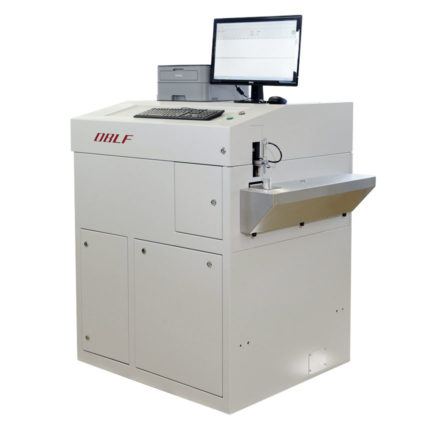QSG 750-II
1.jpg)
QSG 750-II
 Our QSG 750-II spark emission spectrometer can also be called OBLF’s flagship model. This single- or multi-matrix model is ideal for all applications demanding the lowest possible detection limits, the highest degree of reproducibility and additional metallurgical information about the analyte. The application spectrum goes from primary producers like steel mills or other smelteries through metal-processing companies right up to research institutes and universities.
Our QSG 750-II spark emission spectrometer can also be called OBLF’s flagship model. This single- or multi-matrix model is ideal for all applications demanding the lowest possible detection limits, the highest degree of reproducibility and additional metallurgical information about the analyte. The application spectrum goes from primary producers like steel mills or other smelteries through metal-processing companies right up to research institutes and universities.
At first glance, the QSG 750-II is comparable with the QSN 750-II model. The main difference lies in the data logging system, which is based on the GISS technology (Gated Integration of Single Sparks) developed by OBLF. Given identical dimensions, it is also fitted with tried-and-tested hardware components like the temperature-stabilised 750 mm vacuum optics, the Gated Digital Source (GDS) technology with freely definable parameters and the patented, self-cleaning spark stand. An exhaust filter ensures consumed argon is purged. The easy accessibility of all key device parts simplifies service tasks that need to be performed by the user.









